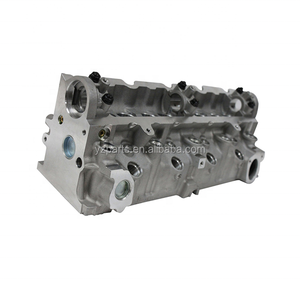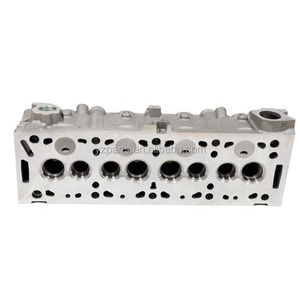(11590 products available)






























 Ready to Ship
Ready to Ship












































































































































A w3 engine can be classified into different types based on its structure and functionalities. They include:
W3-I W3 Engine
The W3-I is a W3 family of engines designed by the W3 company for the International Standard Atmosphere (ISA) conditions. The W3-I engines are known for their high thrust-to-weight ratio. The W3-I engines are used in military aircraft that need high power output in a compact size.
W3-1 W3 Engine
The W3-1 is a family of engines that use the W3 engine layout. The W3-1 engines are designed for low emissions and noise levels. The W3-1 engine uses advanced materials and W3 engine technology to reduce emissions and noise. The W3-1 engines are used in commercial aircraft that need to meet environmental regulations.
W3-3 W3 Engine
The W3-3 engine is also known as the W3-3A engine. It is a family of engines developed by the W3 company. The W3-3 engines are known for their durability and reliability. The W3-3 engines are used in regional aircraft that need engines that can operate for many hours with low maintenance requirements.
1. Engine Size:
W3 engines are smaller than W4 and W6 engines. Their exact displacement details may differ depending on the vehicle model. Generally, the displacement ranges between 1.0 and 1.5 liters.
2. Number of Cylinders:
The W3 engine contains three cylinders arranged in a W pattern. A W-patterned layout is more compact and lighter than other layout styles.
3. Cylinder Configuration:
W3 engines are often configured as inline engines. All three cylinders are arranged in a line.
4. Valves per Cylinder:
Each cylinder in a W3 engine has about two to four valves. The valves improve air intake and exhaust efficiency.
5. Timing Mechanism:
W3 engines use timing belts or chains to synchronize the movement of the engine's valves and pistons. The timing mechanism is important for all internal combustion engines, as it optimizes performance and efficiency.
6. Fuel Type:
Most W3 engines use gasoline as fuel. However, some modern W3 engines can run on diesel.
1. Regular Oil Changes:
Oil changes are key to maintaining the W3 engine's health. Engine oil lubricates the moving parts and prevents wear and tear. The oil also helps dissipate heat from the engine. Generally, oil changes should occur after every 5,000 to 10,000 kilometers. However, the frequency may differ depending on car usage, oil type, and the vehicle's service manual.
2. Air Filter Replacement:
The air filter prevents dirt and debris from entering the W3 engine. Clogged air filters reduce airflow and lower engine performance. Therefore, visually inspect the air filter every five thousand kilometers. Replace the air filter at least after every 20,000 to 30,000 kilometers.
3. Spark Plug Inspection:
W3 engines use spark plugs to ignite the air-fuel mixture in the cylinders. Over time, spark plugs may wear out or get clogged with deposits. This may result in engine misfires or reduced fuel efficiency. Therefore, inspect the spark plugs every 10,000 kilometers. Replace spark plugs that are worn out or damaged.
4. Coolant Level Check:
W3 engines use coolants to regulate engine temperatures. High coolant temperatures may damage the engine. Therefore, always keep the coolant levels within the recommended range. Check the coolant levels during routine oil changes or car servicing.
5. Timing Belt Inspection:
The timing belt connects the cylinders and the crankshaft. The timing belt ensures the valves and pistons move in sync. A worn-out timing belt can snap or break, causing major engine damage. Therefore, inspect the timing belt every 50,000 kilometers. Replace the timing belt after every 60,000 to 100,000 kilometers.
Understanding Web3
Firstly, to comprehend how to select the right W3 engine, one must have a fundamental understanding of Web3. Web3, often called Web 3.0, is the third generation of the World Wide Web that aims to decentralize the internet using blockchain technology. The W3 engine refers to the tools and technology that power Web3 applications, such as decentralized networks, smart contracts, and blockchain integration. Therefore, choosing the right W3 engine is essential for building efficient, secure, and user-centric decentralized applications (dApps) that leverage the full potential of Web3.
Consider the Project's Goals
It is important to consider the goals of the project before choosing a W3 engine. Is it a game, a social platform, or a marketplace? Different engines suit different applications. For example, if the project is a decentralized game, an engine like Ethereum with Polygon for scalability might be suitable due to its security and extensive developer tools.
Scalability and Performance
Scalability and performance are critical factors when selecting a W3 engine. As Web3 applications operate on decentralized networks, their ability to scale without compromising performance is vital. Consider the transaction speeds, network congestion, and fees of the W3 engine. For instance, some engines like Solana and Avalanche provide high throughput and low transaction fees, making them ideal for applications requiring high scalability, such as real-time trading platforms or large-scale decentralized applications (dApps). In contrast, Ethereum, while secure and widely adopted, may face scalability challenges with congestion and high gas fees. Evaluate the application's scalability needs and choose an engine that can accommodate future growth without sacrificing performance.
Security and Trustlessness
Security and trustlessness are paramount in the W3 engine selection process. Web3 applications must ensure user data security and integrity, eliminating the need for intermediaries or centralized authorities to instill user trust. Consider the security features embedded in the W3 engine.
For instance, engines like Ethereum and Bitcoin have established a robust security track record over the years, securing billions of dollars in assets and applications. Their decentralized nature and extensive network of validators reduce the risk of single points of failure or attacks. Additionally, engines like Polkadot facilitate interoperability between blockchains while maintaining security through its shared security model. This enables developers to build secure applications that can communicate across multiple blockchains, enhancing security and trustlessness.
Developer Community and Ecosystem
Evaluating the developer community and ecosystem is crucial when selecting a W3 engine. A vibrant and active community signifies a rich ecosystem with extensive resources, tools, and support, enhancing the development experience. Look for engines with large developer communities offering comprehensive documentation, tutorials, and support channels. This ensures developers have access to resources, assistance, and collaboration opportunities, streamlining the development process and troubleshooting.
Moreover, consider the ecosystem's maturity and available tools. Are there established libraries, frameworks, and development tools that can expedite the development process? Are there existing dApps, protocols, and services that developers can leverage or integrate with? A thriving ecosystem with a diverse range of tools and services empowers developers to build robust Web3 applications efficiently, saving time and resources.
Interoperability and Integration
Interoperability and integration capabilities are critical considerations when selecting a W3 engine. Web3 applications often require seamless communication and interaction with other blockchains, protocols, and decentralized services. Choosing an engine that facilitates interoperability can broaden the application's reach and open up new possibilities for integration.
For example, engines like Cosmos and Polkadot are designed explicitly for interoperability, enabling seamless communication between different blockchains. This allows developers to build applications that can interact with multiple networks, enhancing functionality and expanding the user base. Furthermore, consider the integration capabilities of the chosen W3 engine. Can it easily integrate with existing decentralized services, such as decentralized finance (DeFi) protocols, identity solutions, or storage networks? This integration can enhance the application's functionality, providing users with a comprehensive Web3 experience.
Decentralization and Governance
Decentralization and governance are pivotal factors in selecting a W3 engine. Web3 aims to empower users by giving them control over their data and applications, reducing reliance on centralized entities. Evaluate the level of decentralization offered by the W3 engine. Is it governed by a centralized foundation, or is it community-driven through decentralized governance mechanisms?
Choosing a W3 engine with strong decentralization principles fosters trust among users, as they know the application operates on a permissionless and censorship-resistant network. Additionally, consider the governance model of the chosen engine. Can users participate in decision-making processes through token-based governance mechanisms? This empowers users and allows the application to adapt and evolve according to the community's needs and preferences.
Ease of Development and Learning Curve
Consider the ease of development and learning curve associated with the chosen W3 engine. Different engines have varying programming languages, frameworks, and development environments. Evaluate the familiarity and expertise of the development team with the engine's technologies.
Choosing an engine that aligns with the team's skills and experience can significantly impact the development speed and application's quality. Additionally, consider the learning curve for new team members. Engines with extensive documentation, tutorials, and community support can reduce the learning curve and facilitate quick onboarding of developers.
It is possible to replace a W3 engine by following the right steps. Here is a DIY guide for replacing W3 engines.
Tools needed
Steps
Q1: What are the components of a W3 engine?
A1: A W3 engine has three cylinders arranged in a triangular or radial pattern. Each cylinder has a piston that moves up and down to create power. The cylinders work together to create a smooth and powerful engine.
Q2: What is the difference between the W3 and the W12 engine?
A2: The main difference between the W3 and W12 engines is the number of cylinders. The W3 engine has three cylinders, while the W12 engine has twelve. The W12 engine is more powerful and is used in high-performance cars, while the W3 engine is smaller and more efficient.
Q3: Is the W3 engine still used today?
A3: Yes, the W3 engine is still used today, especially in small cars and motorcycles. It is a popular choice for manufacturers who want to create efficient and environmentally friendly vehicles.